When you’re planning to outfit your recreational vehicle or van with a subfloor, one of the most important questions is: what is the recommended RV subfloor thickness? This guide will provide you with information on what type of material makes up the best RV subfloor and how thick it should be. We’ll also answer some common questions about RV subfloor thickness, provide tips for measuring and installing it, and discuss the advantages of using thicker or thinner materials.
Table of Contents
What is an RV floor made of?
Insulation
The insulation of an RV floor is typically made out of one or two layers of foam board that provide thermal and acoustic insulation. This material can help keep your interior temperature and sound levels comfortable, while also protecting the subfloor from water damage. The type of foam used in most RV applications is polystyrene, which is available in different thicknesses depending on your needs. [1]
Subfloor
The subfloor of an RV is typically made out of plywood, which comes in different thicknesses and sizes. The most common thickness for an RV subfloor is 3/4-inch, although some may have a thicker or thinner layer. Plywood provides a strong foundation for the flooring materials that will be installed on top of it, such as carpeting or laminate. [1]
Top Layer
The top layer of an RV floor is typically made out of vinyl, laminate, or carpeting. Vinyl and laminate are popular due to their durability and water-resistance, while carpets offer a softer feel. The thickness of this material will vary depending on the type chosen. [1]
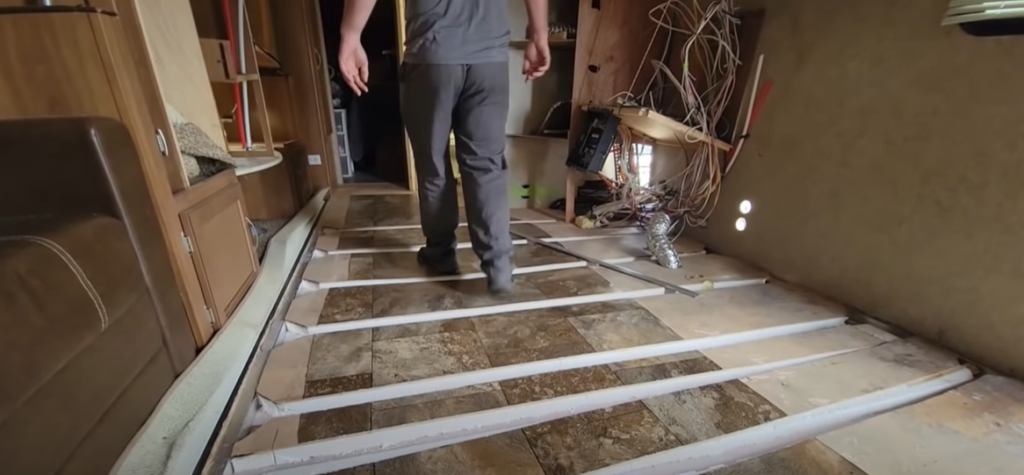
RV Subfloor Thickness
Having an RV can be a great way to travel and explore the world. But before you hit the road, it’s important to make sure your RV is in top condition — and that includes making sure your subfloor (the structural flooring underneath all other layers of flooring) is up to par. So what’s the recommended thickness for an RV subfloor? We’ve got the answers and advice to help you determine what’s right for your vehicle.
If you’re unsure of what thickness to choose, it’s always best to consult a professional before making a decision. [1]
How to Install an RV Floor?
Prepare your tools
Before you begin, you need to make sure that you have the right tools for the job. You’ll need some basic supplies such as a power drill and screws (preferably self drilling screws), as well as protective pieces of wood like plywood or particleboard to help you install your RV flooring properly. [1]
Remove the existing floor
Once you’ve gathered together the necessary tools and supplies, you can start removal of the existing floor. This may require cutting away any objects that are attached to it. Depending on what type of material your van has as a subfloor, this could range from simply unscrewing or unclipping panels to having to cut out sections with a saw. [1]
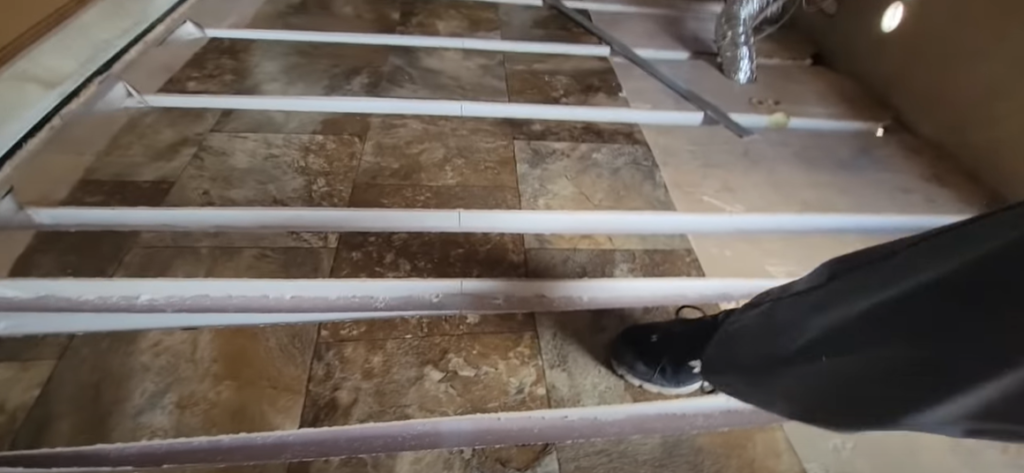
Clean up
Once the existing floor has been removed, it’s important to do a thorough sweep of the area. This will help ensure that no dirt or debris is left behind which could interfere with the installation process. Additionally, if there are any holes or gaps in the subfloor, be sure to fill these up before continuing. [1]
Set up the battens
The battens are pieces of wood that will be used to attach your RV flooring to the van’s subfloor. These need to be installed securely so that they don’t move around in transit. Ideally, they should be attached with self tapping screws or similar fasteners. Make sure that each one is level so that you get an even finish to the floor once it’s installed. [1]
Place the insulation
Insulation helps to keep your van’s interior warm in the winter and cool in the summer. It also adds an extra layer of protection against moisture and dampness. Depending on what type of insulation you’re using, it might need to be cut into strips or smaller pieces that can easily fit around the battens. [1]
Put down the plywood flooring
Plywood offers a strong and durable flooring solution for RVs. You’ll want to make sure that it is securely fastened down with self tapping screws or similar fasteners, so that it doesn’t move in transit. It’s also important to ensure that the subfloor is completely clean before laying the plywood as any dirt or debris can cause the flooring to become uneven. [1]
Install the top layer
Once the plywood is in place, you can start on the top layer. This could be anything from vinyl or carpet to laminate or hardwood. Make sure that this layer is also securely fastened down to prevent it from shifting while in transit.
Finally, once all of the layers are in place, you can enjoy your brand new RV flooring! With the right tools and a bit of patience, you can get a beautiful, durable and long-lasting finish. Just make sure to take your time and do thorough research before starting the installation process.
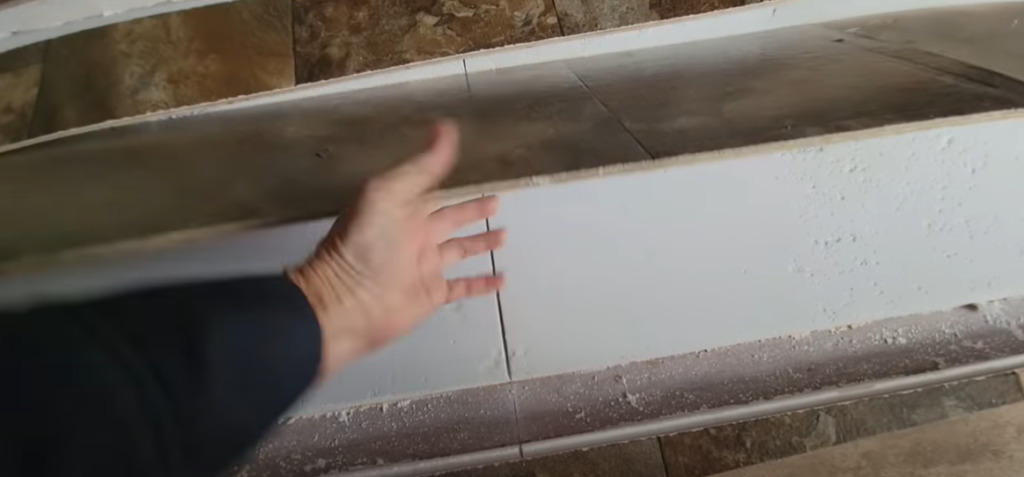
Why would you replace the RV subfloor?
Replacing the subfloor in an RV is not a necessity, but it can improve your overall experience. It’s important to understand the advantages that come with replacing this critical aspect of your vehicle. The main benefits include:
- Increased comfort while driving and sleeping by reducing road noise and vibration
- Improved insulation that helps keep the temperature in your RV more stable
- Enhanced durability, as a thicker floor will be able to withstand heavier wear and tear [2]
Cost of the subfloor
The cost of the subfloor largely depends on the type of material you choose. Plywood is generally the cheapest option, but composite wood and aluminum are much more expensive. You will also need to factor in costs for adhesive for attaching the plywood or any other materials you use. In general, expect to spend anywhere from $200-$700 for materials, depending on the size of your van. Labor costs will vary depending on the complexity of the install, but can range from a few hundred to thousands of dollars. [2]
How Are RV Floors Constructed?
RV floors are usually constructed with plywood and often include insulation materials. Plywood is a strong, durable material that can withstand the weight of both you and your gear, while providing excellent thermal insulation. It is also lightweight, making it easier to install in a vehicle. The thickness of the plywood used in an RV floor will depend on the size and weight of your vehicle. Generally speaking, RV flooring should be at least ¾” thick for optimal support and insulation. [3]
Basic RV Floor Construction
For basic RV floor construction, the most common type of plywood used is ¾” thick tongue and groove plywood with a layer of 2lb foam insulation placed between it. This combination provides good sound and heat insulation and prevents moisture from getting into your vehicle. The foam helps to reduce the amount of noise transmission in your RV and can help make the interior more comfortable. [3]
What Kind of Flooring Should I Use in My RV?
When it comes to RV flooring, you have a lot of options. Some prefer carpet while others opt for the low-maintenance appeal of vinyl or linoleum. No matter what type of flooring you choose, it should be installed on top of a subfloor with the right thickness to ensure long-term stability and comfort. [3]
What’s The Best RV Flooring?
When deciding on the best RV flooring, there are a few factors to consider. First, you need to determine what type of materials will work best for your needs and lifestyle. Many people opt for easy-to-clean vinyl or laminates that offer durability and comfort. Additionally, some choose to install carpeting for a softer feel and added insulation. [3]
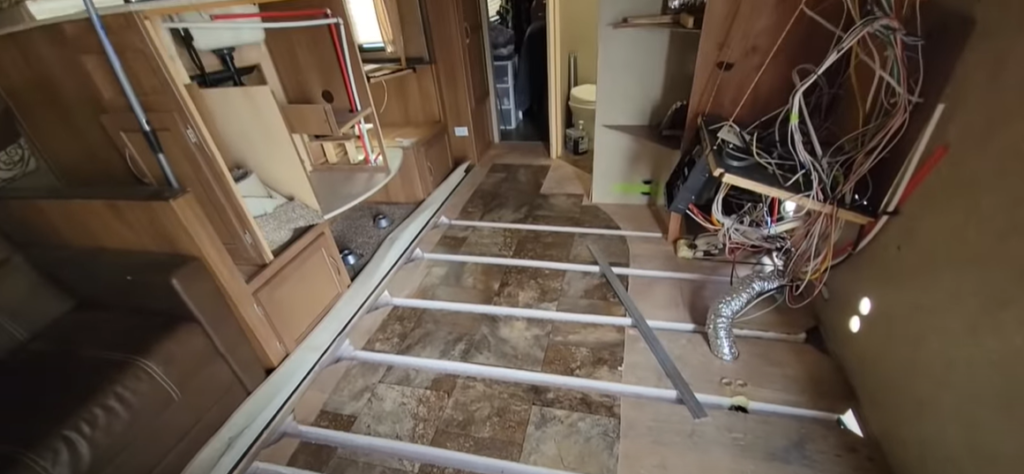
FAQ
What is a good subfloor thickness?
The recommended thickness for a subfloor in an RV is 3/4” plywood. This is the same recommendation for other vehicles and will provide your floor with enough strength to support its weight and give you insulation from cold and heat.
How thick is the Airstream subfloor?
Airstream subfloor thickness is typically 3/8” thick. This is the minimum recommended thickness for a van, but any thicker than this will provide more protection and support.
What is the best plywood for the travel trailer floor?
The best type of plywood for the floor in your travel trailer is a 3/4″ thick, marine grade A/B Plywood. This type of plywood is waterproofed and treated to resist rot and decay. It is also pressure-treated for extra strength and durability.
How thick should the wood be for the trailer floor?
The recommended thickness for a trailer floor is 3/4” thick. This will give you enough support and insulation from cold and heat. It may also be beneficial to use a waterproof sealant when installing the plywood, as this will help protect it against potential moisture damage.
How thick should trailer floor plywood be?
The recommended thickness for trailer floor plywood is 3/4” thick. This will provide enough strength and durability to support the weight of your RV, and also give you good insulation from cold and heat. Be sure to use a waterproof sealant when installing the plywood to help protect it against potential moisture damage.
Is 12mm ply OK for flooring?
Yes, 12mm ply is suitable for flooring. However, it is recommended to use at least 18mm plywood for the best strength and durability. The thicker the plywood, the better insulated your RV will be from cold and heat.
What is the normal thickness of subfloor plywood?
The normal thickness of subfloor plywood is usually 3/4” thick. This is the recommended thickness for most vehicles, as it provides enough strength and insulation without adding too much weight. If you choose to use a thicker plywood, be sure to use a waterproof sealant when installing it to help protect against potential moisture damage.
What wood is best for a trailer floor?
The best wood choice for a trailer floor is marine-grade A/B plywood. This type of plywood has been pressure treated and waterproofed to give it extra strength and durability, making it perfect for use in an RV or travel trailer. It is also resistant to rot and decay, so you can be sure that your floor will last a long time.
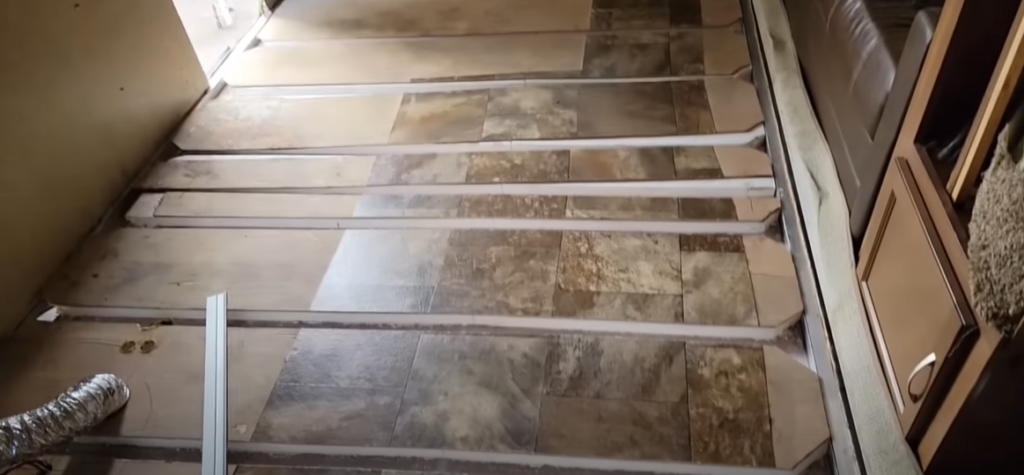
What material is best for the trailer floor?
The best material for the trailer floor is marine-grade A/B plywood. This type of plywood has been pressure treated and waterproofed to give it extra strength and durability, making it perfect for use in an RV or travel trailer. It is also resistant to rot and decay, so you can be sure that your floor will last a long time. Additionally, using a waterproof sealant when installing the plywood will help protect it against potential moisture damage.
How thick should a utility trailer floor be?
The recommended thickness for a utility trailer floor is 3/4” thick. This will provide enough strength and insulation to support the weight of your trailer and any cargo you may be carrying. Be sure to use a waterproof sealant when installing the plywood, as this will help protect it against potential moisture damage.
Useful Video: Subfloor VS. Underlayment Explained
Conclusion
In conclusion, the recommended thickness of RV subfloor is 3/4 inch to 1 1/2 inches. It’s important to consider the weight and wear of your vehicle before selecting a flooring material for your van or recreational vehicle (RV). Additionally, make sure that you follow all local regulations when replacing the existing subfloor, as there may be minimum thickness requirements for different types of flooring. Finally, don’t forget to insulate your subfloor before installing the new material in order to ensure that your RV is comfortable in all seasons! With these tips in mind, you should now be able to make an informed decision about what thickness of subfloor is best for your RV. Thank you for reading!
References:
- https://www.camperupgrade.com/rv-subfloor-thickness/
- https://trucksauthority.com/what-is-recommended-rv-subfloor-thickness/
- https://thecampingadvisor.com/rv-floor-construction/

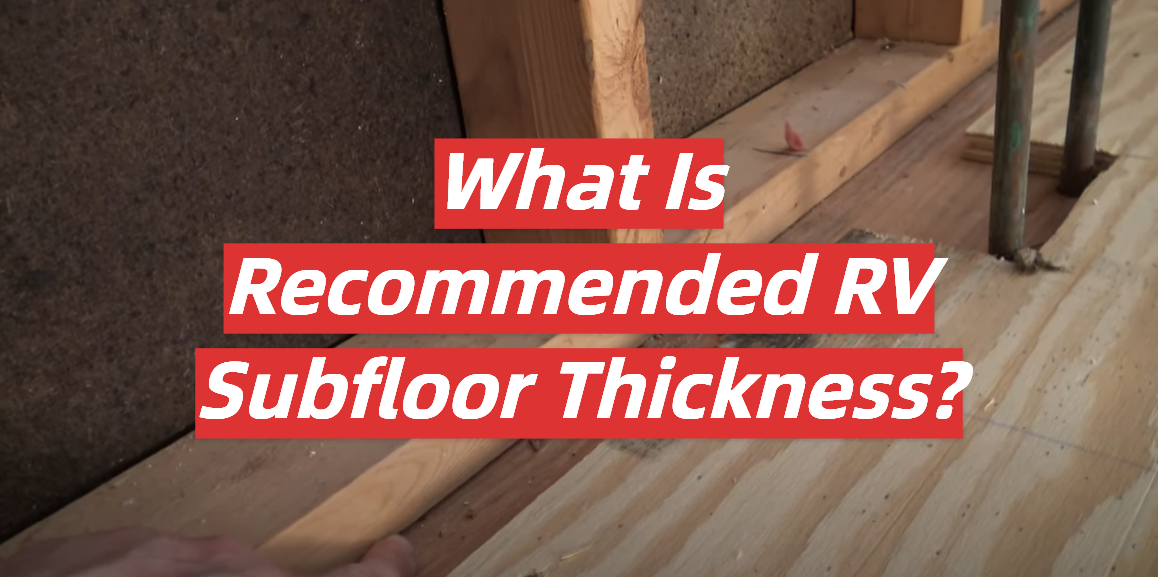




Leave a Reply